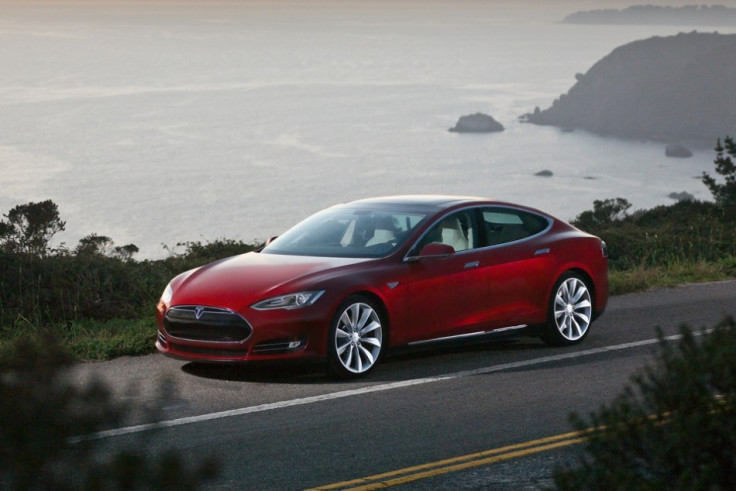Tesla Model S: A War of Words Between Elon Musk and New York Times
A war of words is developing over a recent review of the electric Tesla Model S car written by the New York Times, which claims the car's battery was affected by cold weather, causing the reporter John Broder to be left stranded and in need of recovery after the car ran out of power sooner than expected.

Soon after the New York Times published the article, Tesla and Paypal co-founder Elon Musk wrote a blog post claiming Broder had "violated common sense" to make the car run out of power. Musk's blogpost was backed up with data recorded by the car.
Broder has now replied though an NY Times blog post, claiming it was Tesla employees who advised him on his actions, and he did not fix the test to make a story.
In his review, published 8 February, Broder drove the £65,000 car just over 500 miles along a stretch of Interstate 95 on the east coast of America, where Tesla has installed two Superchargers to top up the car's battery faster than conventional chargers, which already line the route.
Broder reported that the car was unable to reach his final destination, despite Tesla staff advising him over the phone that his actions (recharging, turning the heating down, harvesting power through braking) would be enough to finish the journey.
After the disappointing review was published, Musk, who is also pursuing the space tourism industry through his SpaceX project, said Broder had changed the facts to turn the story against Tesla.
Scrutinised
This isn't the first time a Tesla review has been scrutinised by Musk, as his company launched a libel case against the BBC's Top Gear, after it's review of the Tesla Roadster sports car in 2008 showed that it could manage just 55 miles around the show's test track, a quarter of the stated range - albeit for regular driving.
Tesla was unsuccessful in its attempts to sue for libel, but from then on the company fitted trackers to cars given to reporters, and it is the data from these that Musk is claiming as evidence that the New York Times did not tell the truth.
Having provided detailed telemetry mapping Broder's 500 mile drive in the Model S - including data on speed, battery life, time spent recharging and what temperature the heating was set to - Musk claimed Broder's actions were a "violation of common sense."
Musk wrote: "When the facts didn't suit his [Broder's] opinion, he simply changed the facts. Our request of The New York Times is simple and fair: please investigate this article and determine the truth. You are a news organisation where that principle is of paramount importance and what is at stake for sustainable transport is simply too important to the world to ignore."
In responsonse to Musk post, Washington-based news site The Atlantic took each of his complaints and compared them to Broder's review, stating that none of the Tesla co-founder's arguments are convincing.
The site concluded: "Not all of Musk's data is entirely convincing and the parts that are don't point to a malicious plot. In the end, it looks like Broder made some compromises to get from the Newark charging station to the Milford one, in both speed and temperature.
"Broder may not have used Musk's car the way Musk would like, but Musk is, for now, overhyping his case for a breach of journalism ethics."
Response
Broder himself responded through a piece written in the New York Times' Wheels blog, published 14 February, in which he said he acted on advice given to him by Tesla employees through "about a dozen" phone calls during the drive. Broker claims he was told that, although the car's remaining mileage readout was short of what he needed, the car would harvest energy created while braking to top up the battery.
Additionally, Broder said that he did not drive around a car park trying to run the battery down - as claimed by Musk - but was instead looking for a poorly lit Tesla Supercharger port in the dark, and plugged the car in when he found it.
Broder concluded by saying that Musk has apologised to him (although if this came before or after the telemetry was viewed is unclear), and admitted the two Supercharger stations should be 60 miles closer together. Musk also offered the reporter a second test drive once additional chargers have been added.
© Copyright IBTimes 2025. All rights reserved.






















